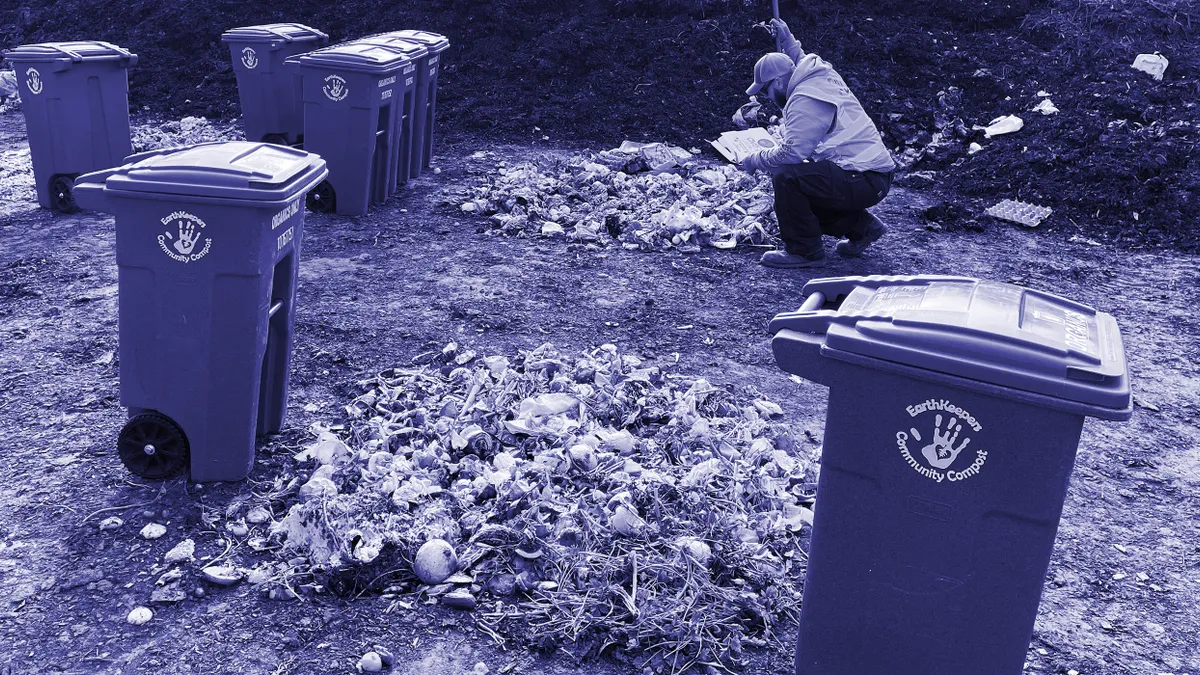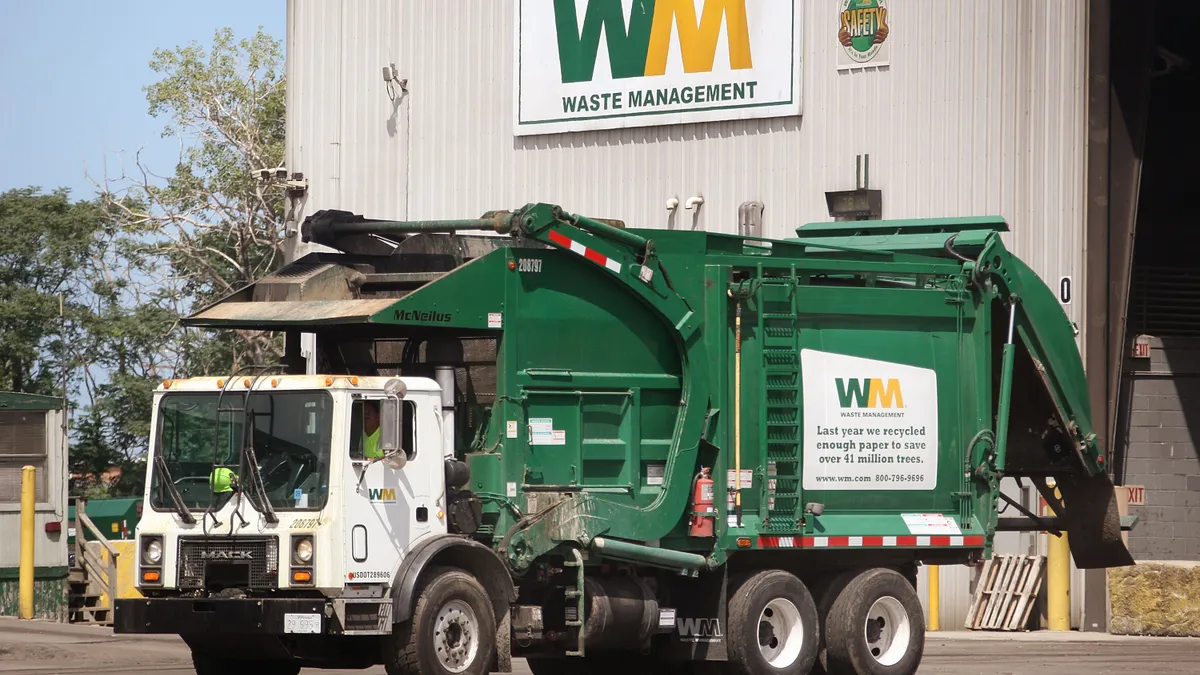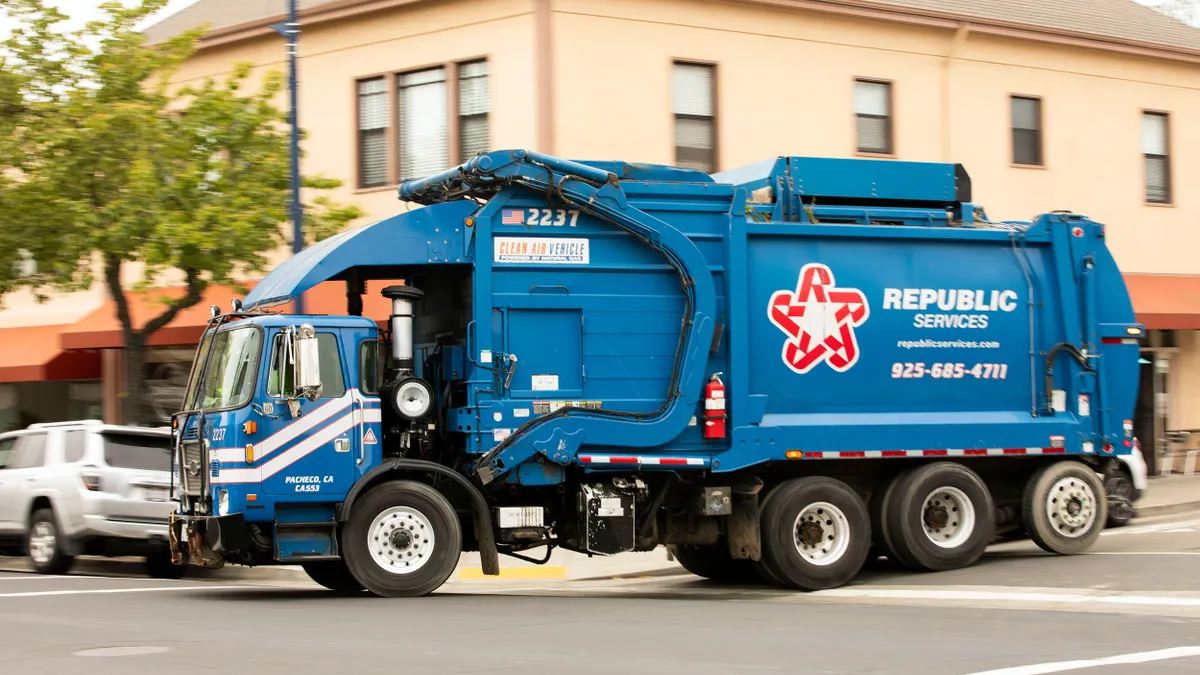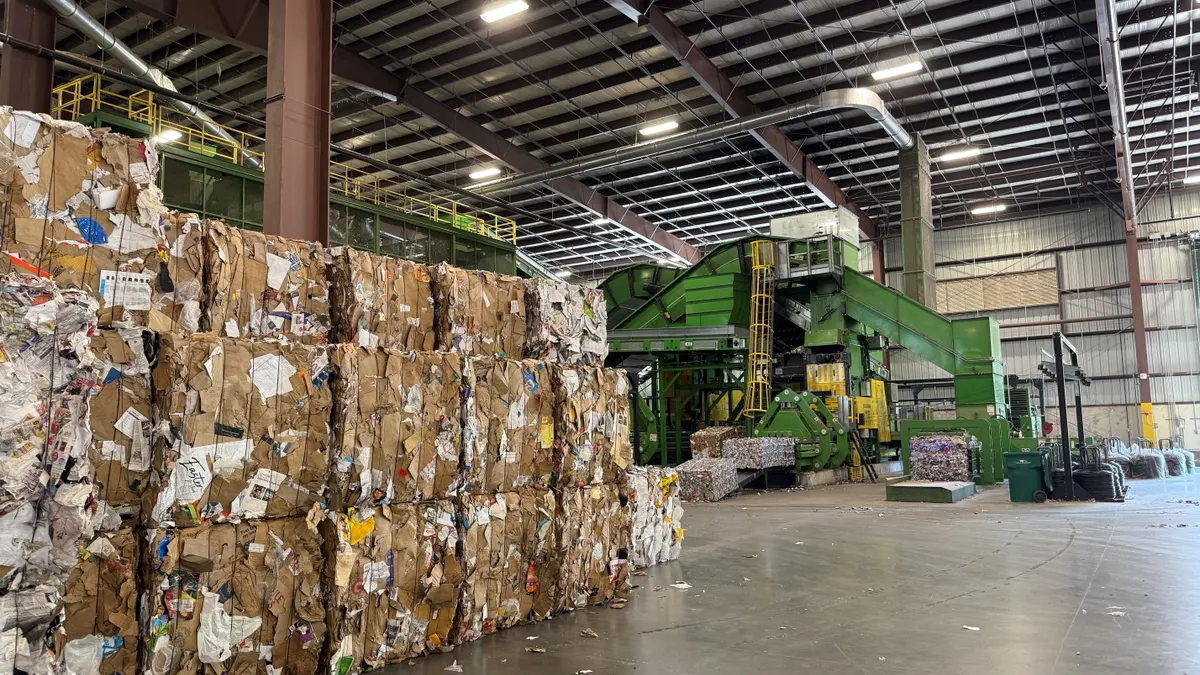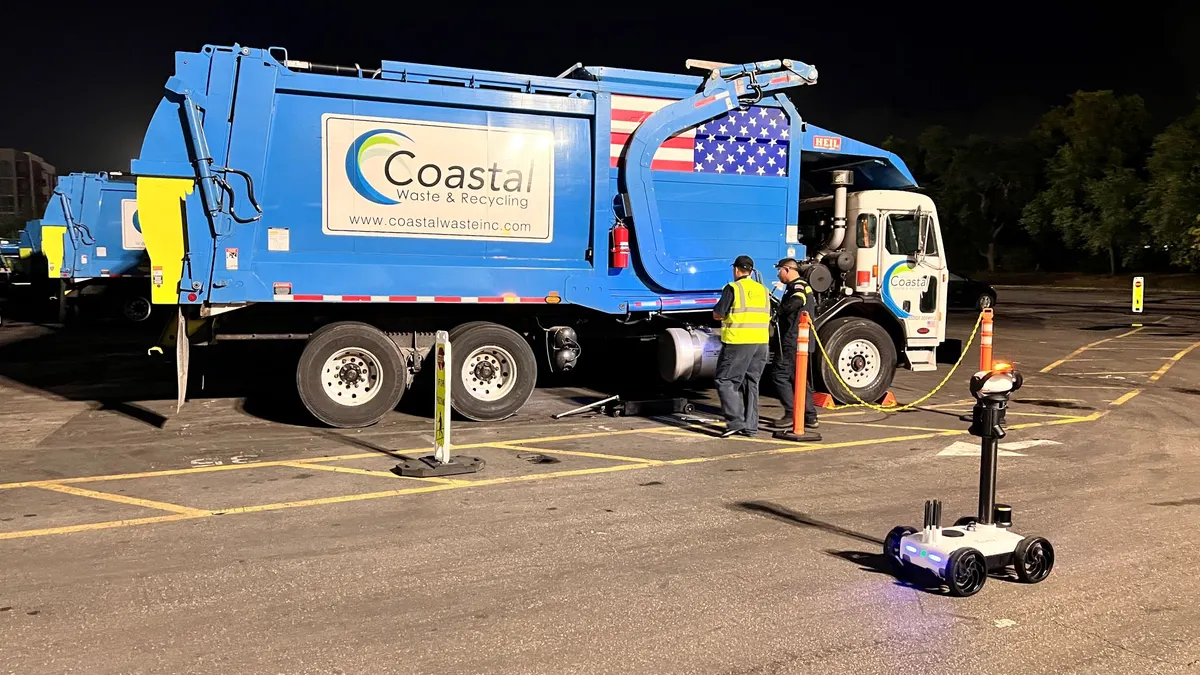City Haul is Waste Dive’s ongoing series examining the people and issues shaping municipal waste and recycling across the U.S. Have a tip or an angle about city-run operations that you think should be part of the conversation? Please reach out to mrachal@industrydive.com.
Budgeting and planning for municipal governments has looked a little different for the past year, as local leaders welcomed an unprecedented flow of federal funding in the wake of coronavirus relief and bipartisan infrastructure legislation.
In particular, government allocations and competitive grant opportunities enabled by the approximately $350 billion in Coronavirus State and Local Fiscal Recovery Funds under the American Rescue Plan Act passed in March 2021 continue to come into play. Meanwhile, certain funding outlined in the Infrastructure Investment and Jobs Act is yet to be unlocked.
These funding opportunities are inspiring some localities to go after more novel, ambitious projects that support climate goals, or, in many cases, follow through on the overdue infrastructure upgrades that may have been on the back burner for years. Elevating waste and recycling priorities in that process can be a task in and of itself, with so many important needs in municipalities competing for flexible funding, and every municipality dividing their unique amount of funding differently. Local governments' ARPA money could be used to support everything from revenue replacement and public health response to premium pay for essential workers and investments in water, sewer and broadband infrastructure.
Bloomington, Indiana, for instance, created a small composting trial program for restaurants and retail food establishments with local compost group EarthKeepers. Participants undergo a waste audit and receive help setting up compost collection and services, with the goal of lowering barriers to integrating composting practices in operations. Meanwhile, leaders in Alpena County, Michigan, reportedly decided to allocate $500,000 toward building a new recycling center, a notable portion of the overall $5.5 million in ARPA funds it had to spend, according to The Alpena News.
Recent federal funds have represented an important and rare opportunity to support solid waste initiatives, according to Luann Meyer, who works as an associate in the solid waste practice area at environmental and engineering firm Barton & Loguidice.
Meyer, who also serves as president of the Solid Waste Association of North America's New York chapter, said she’s seen examples in the Northeast of cities and counties considering ARPA-support pursuits of new transfer stations or landfill gas projects.
“There's a lot of grant funding available for projects related to waste reduction, recycling, organics management, food donation — those types of things,” she said, through states and other entities like The Recycling Partnership. “But what they don't have is — there's no real grant money out there for those solid waste-type operations such as transfer stations or trash collection," which frequently rely on tip fees or taxpayer money. "Definitely a theme I've seen is that with this money, they're looking at being able to spend it on some other areas where there's typically no funding or limited funding available.”
Meyer also gave the example of municipalities securing low-interest rates or loans for recycling carts: “Well, what about trash carts?” she noted.
For all the examples of ARPA funding being used for novel programs or purchases, another common thread Meyer has seen across ARPA-supported project ideas has been municipalities dealing with upgrades they’ve put off as recycling or collection infrastructure, often put in place in the early '90s, has come to the end of its useful life, she said.
In that vein, Syracuse, New York, is one city pursuing fleet updates. Since the current mayor’s administration took office in 2018, “sanitation has really been sort of at the forefront of problems that we knew we really needed to address,” said Corey Driscoll Dunham, chief operating officer for the city, who oversees departments including public works.
The technology has evolved and our sanitation operation has not.

Corey Driscoll Dunham
Chief operating officer for the city of Syracuse, New York
As far as putting public works needs’ in competition with those of other departments, issues of neighborhood cleanliness and the opportunity to save unnecessary costs both helped sanitation rise to the top.
Waste collection in Syracuse is still manual, she explained. “The way in which we do our solid waste collection really hasn't evolved at all," she said. "We've got these laborers lifting 50-pound cans hundreds of times a day and so, not surprisingly, our workers' comp is very high," she added. Dunham also noted that not having uniform waste receptacles leads to litter problems. Ultimately, it's "all the things that you can imagine a sanitation operation that hasn't really evolved with the time."
When ARPA came around, the city decided to pursue upgrading its system to automated carts and arms. It's "beyond time for us to to incorporate all the tools that are out there now to make this much safer for our employees, easier to understand for our residents, [and] create a cleaner city," Dunham said.
The city of Pittsburgh is also updating its "overly aged" fleet of approximately 70 trucks with some electric refuse trucks, said Emily Bourne, communications specialist for the Department of Public Works. Through ARPA and other funding sources, the city is aiming to have nine electric trucks in service by the end of this year. Like Syracuse, Pittsburgh was aware of these issues long before ARPA existed. Pittsburgh has notoriously bad air quality, explained Bourne, and in a 2015 study, the city identified refuse trucks as a top emissions offender. The idea to put ARPA funds toward the refuse fleet transition was also supported by Pittsburgh's commitment to have all government vehicles be fossil fuel-free by 2030.
Wait-and-see on infrastructure funding
As local agencies implement ARPA-funded initiatives, there's still potential for the grant money from the infrastructure law to impact recycling programs.
The IIJA passed last November outlined approximately $350 million for recycling, including $275 million in grants through the Save Our Seas 2.0 Act wrapped into the legislation, and up to $15 million per year in recycling education grants over five years through the RECYCLE Act, although those funds aren't quite yet in play.
The U.S. EPA is expected to share more information this quarter and begin the stakeholder engagement and outreach process. Funding was set to potentially be available as soon as the end of this year, but Lily Schwartz, federal affairs manager at The Recycling Partnership, suggested that timeline could prove overly ambitious.
Meyer echoed that, noting that many entities interested in those funds aren't meaningfully factoring them in at this point. “I don't think that they're looking that far ahead, given the fact that it's not a sure thing,” she said. “So I think most are just kind of waiting and seeing before they make any decisions.”
In context — the $350 million on the table through the legislation is around the size of the annual budget of the city of San Francisco's Department of Public Works. SWANA CEO David Biderman said a recent call between EPA and local government stakeholders have emphasized common concerns, including that needs far outweigh available funding, and that the application process itself will be a heavy lift for some municipalities. "We need to continue to urge EPA to move forward with this expeditiously," Biderman said.
Despite the question marks, the funding still very much provides reason for measured optimism, Schwartz suggested, as the U.S. must make progress in closing a $17 billion funding gap preventing widespread and equitable recycling access, as estimated by the Partnership last year. The tens of millions allocated in the IIJA for waste, recycling and education outreach "does not add up to $17 billion," Schwartz noted. And that's coming from a federal source that runs out after five years, she added.
"And so what we really need is a sustainable funding source," Schwartz said. “It's wonderful to see recycling in the scope and on the radar of our federal policymakers. It's wonderful to see them weighing in and allocating these funds. But we need a lot more and it's going to take industry, public, private involvement to really get to where we need to go."



